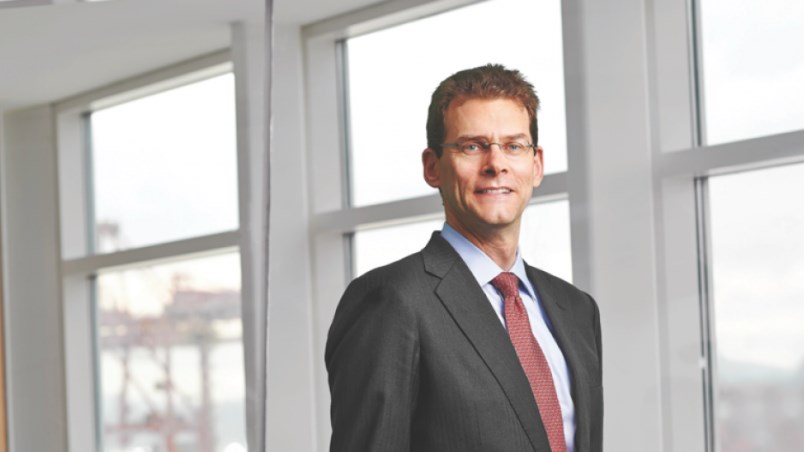While 2020 has offered immense challenges for the Vancouver Fraser Port Authority, container volumes have risen and infrastructure work to enable greater trade capacity continues, president and CEO Robin Silvester told the Greater Vancouver Board of Trade Dec. 10.
“This October was an all-time record for container volumes,” he said, adding cargo volumes were steady, grain year-to-date up by 25%. “Our growth forecast is 3%”
However, Silvester stressed, for the port to continue to be competitive, further expansion beyond projects already underway is needed. That, he said, will necessitate freeing up more Lower Mainland land for industrial uses. Without changes, “we will run out of land within 10 years,” Silvester said.
“If we fail to prepare for future trade, we risk being left behind,” he added. “We need to continue to build out for the growth that we see.”
In 2020, the port authority, with partners, has seen more than $1 billion in infrastructure projects underway across the region, he said in his 12th ‘state of the port’ address. The pandemic has not slowed that infrastructure-addition process, he said.
“It kept people employed during this most challenging of years,” he said, noting the pandemic has caused the world to examine supply chain issues, challenges and changes.
“This is a year where we’ve learned where some of our limits are,” he said.
Those projects include terminal expansions, consolidation of some terminals to allow further land use and also the hope that the multi-billion Roberts Bank Terminal 2 container project will receive approval after a rigorous environmental review.
Silvester said he’s hopeful for a positive response in that process in the second half of 2021, an expansion that would provide two decades of growth capacity.
All such projects are key to B.C.’s COVID-19 recovery, supporting jobs, local companies and the regional economy. And, he said, post-pandemic, the work will further strengthen Canada’s busiest port’s competitiveness with direct benefits for the Lower Mainland and Canada.
The port has not been alone in seeing impacts from the global shutdown of the cruise industry, Silvester said. But, he said, there is a desire to restart the Alaska cruise sector. How that happens, he said, will involve companies and health authorities working in unison to ensure safe operations.
“I’m more optimistic than I was a few months ago,” he said.
Port infrastructure work has not been without controversy.
In November, port plans for a container terminal where an agricultural terminal currently sits brought suggestions from the Sustainable Food Alliance of BC that such a move threatens B.C.’s food security.
Part of that would mean a long-term tenant on the inner harbour south shore, West Coast Reduction, might have to vacate.
“At the right time, it’s going to have to move,” Silvester said.
Silvester said port rental revenues have remained relatively steady with most tenants being able to pay their bills although some smaller companies have received assistance.
Silvester paid tribute to port authority staff, saying 350 people were transitioned from office to home work in two days.
“We haven’t skipped a beat,” he said.



